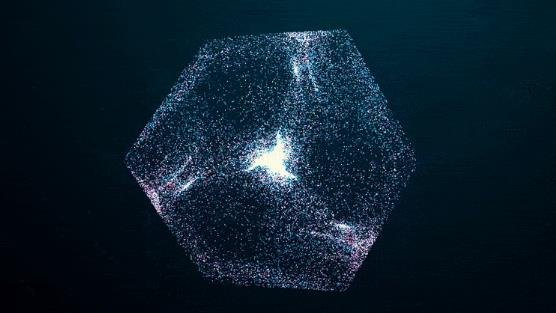Photonic time crystals (PTCs) are a new class of materials that have a refractive index that changes periodically and abruptly in time. Refractive index is the ratio of the speed of electromagnetic radiation in a medium to its speed in a vacuum. PTCs can create novel effects such as time refraction and time reflection, which are different from their spatial counterparts. PTCs can also generate dispersion bands that are gapped in momentum rather than frequency, allowing for exponential amplification of light waves.
A recent study published in the journal Nanophotonics reveals that PTCs can be produced in the near-visible part of the spectrum, which was previously thought to be impossible. The study’s authors suggest that this breakthrough could have profound implications for the science of light, enabling truly disruptive applications in the future.

What are PTCs and how do they work?
PTCs are materials that have a refractive index that varies periodically and abruptly in time. This means that the speed of light in these materials changes rapidly and periodically as time passes. When the refractive index changes abruptly in time, light waves experience time refraction and time reflection, similar to how they experience spatial refraction and reflection at dielectric interfaces.
However, time refraction and time reflection are fundamentally different from their spatial counterparts. For example, while energy (frequency) is conserved at spatial interfaces, a time interface necessarily changes the frequency of the light wave, but conserves its momentum (wavevector k). Also, causality implies that time reflections cannot go back in time, but are back-reflected in space.
Modulating the refractive index periodically in time gives rise to multiple time reflections and time refractions, which interfere with one another and yield dispersion bands that are gapped in momentum rather than frequency. Dispersion bands are regions of allowed values of frequency and momentum for light waves propagating in a medium. In spatial photonic crystals, which are materials with a periodic variation of refractive index in space, the dispersion bands are gapped in frequency, meaning that there are forbidden values of frequency for light waves propagating in these materials.
In PTCs, however, the dispersion bands are gapped in momentum, meaning that there are forbidden values of momentum for light waves propagating in these materials. Importantly, in PTCs, energy is not conserved; hence the states residing in the momentum gap can have exponentially increasing amplitudes, drawing energy from the modulation.
How can PTCs be produced in the near-visible spectrum?
The principles of electromagnetic waves in time-modulated media were theoretically studied many years ago, but PTCs were only proposed recently in a handful of theory papers and in several analogous systems such as water tanks and transmission lines. This is because producing PTCs in the optical domain requires extremely fast modulation of the refractive index on ultrafast timescales.
The study published in Nanophotonics demonstrates that PTCs can be produced in the near-visible spectrum by using single-cycle modulation of the refractive index. Single-cycle modulation means that the refractive index changes only once during one cycle of the light wave oscillation. The researchers used an ultrafast laser pulse to induce single-cycle modulation of the refractive index in a nonlinear crystal.
The researchers showed that by using single-cycle modulation, they could overcome the limitations imposed by dispersion and absorption on conventional modulation schemes. They also showed that by using single-cycle modulation, they could create PTCs with large momentum gaps and high amplification factors.
What are the potential applications of PTCs?
PTCs could open the door to a new branch of optics that explores novel phenomena and functionalities arising from temporal modulation of light-matter interactions. For example, an excited atom embedded in a PTC will spontaneously emit light in all directions when it is much smaller than the wavelength. Some of these directions will coincide with the wavevectors associated with the momentum gap of the PTC. The emission in these directions will be amplified exponentially, drawing energy from the modulation. As time evolves, the emission bandwidth will become narrower, becoming completely monochromatic at asymptotic timescales.
This phenomenon could lead to new ways of controlling spontaneous emission and creating coherent sources of light. Other possible applications include wireless communications, radar technologies, photonic computing, optical sensing and imaging.
PTCs could also enable new forms of quantum optics and quantum information processing, as they could create entangled states of light and matter that are robust against decoherence. PTCs could also allow for the manipulation of topological phases of light, which are global properties of light waves that are insensitive to local perturbations.
PTCs are a new frontier in the science of light, and could revolutionize optics in ways that are faster than can be explained by current theories.
